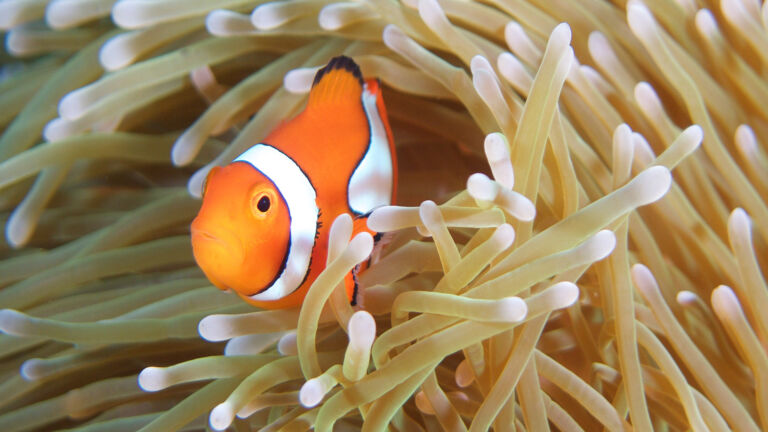Collecting Data on the Reef
One way to help the Great Barrier Reef is to collect data for the Great Barrier Reef Marine Park Authority (GBRMPA) as a Citizen Scientist. Their Citizen Science program is called Eye on the Reef. There are a number of data collection/surveys that GBRMPA conducts, but our Spirit of Freedom guests are able to take part in the Rapid Monitoring survey.
The purpose of the Rapid Monitoring survey is to collect information about reef health indicators, protected and iconic species and emerging reef health issues. The Rapid Monitoring survey includes a 10 minute timed swim with a Rapid Monitoring survey form and counting all the animals you see during the timed swim. You will upload your data when you get back onboard.

Rapid Monitoring Survey
What indicator species do we count in 10 minutes?
- Sea cucumbers
- Giant clams
- Anemonefish
- Butterfly fish
- Grazing herbivores
- Cods and Groupers
- Coral trout
- Maori wrasse
- Turtles
- Sharks
- Crown-of-thorns starfish
Why do we count these animals?
These animals are reef health indicators, may have endangered status, significantly contribute to reef health, have status as an iconic species / be popular with tourists, have commercial value, or inversely, may be detrimental to the health of the reef and need to be monitored/removed. For example, the sea cucumber serves as a cleaning agent for ocean sand. The plentiful presence of sea cucumbers means clean sand and contributes to an overall healthy reef. As well as the crown-of-thorns starfish, as they eat coral and can multiply exponentially in certain conditions, their monitoring and removal are vital to protect the reef. You can learn more about some of these indicator species on our Meet the Locals page.
How will We count them?
Your reef guide will provide you with one waterproof Rapid Monitoring survey form (and waterproof pencil) per buddy pair. Be as quiet as possible and swim in one direction and tally how many animals you see in the timed swim/dive (10 minutes). Keep an eye out for other animals as not to swim into them, and do not touch the animals.
After your snorkel, your reef guide will help you complete the form, ready for database entry via the Eyes on the Reef app.